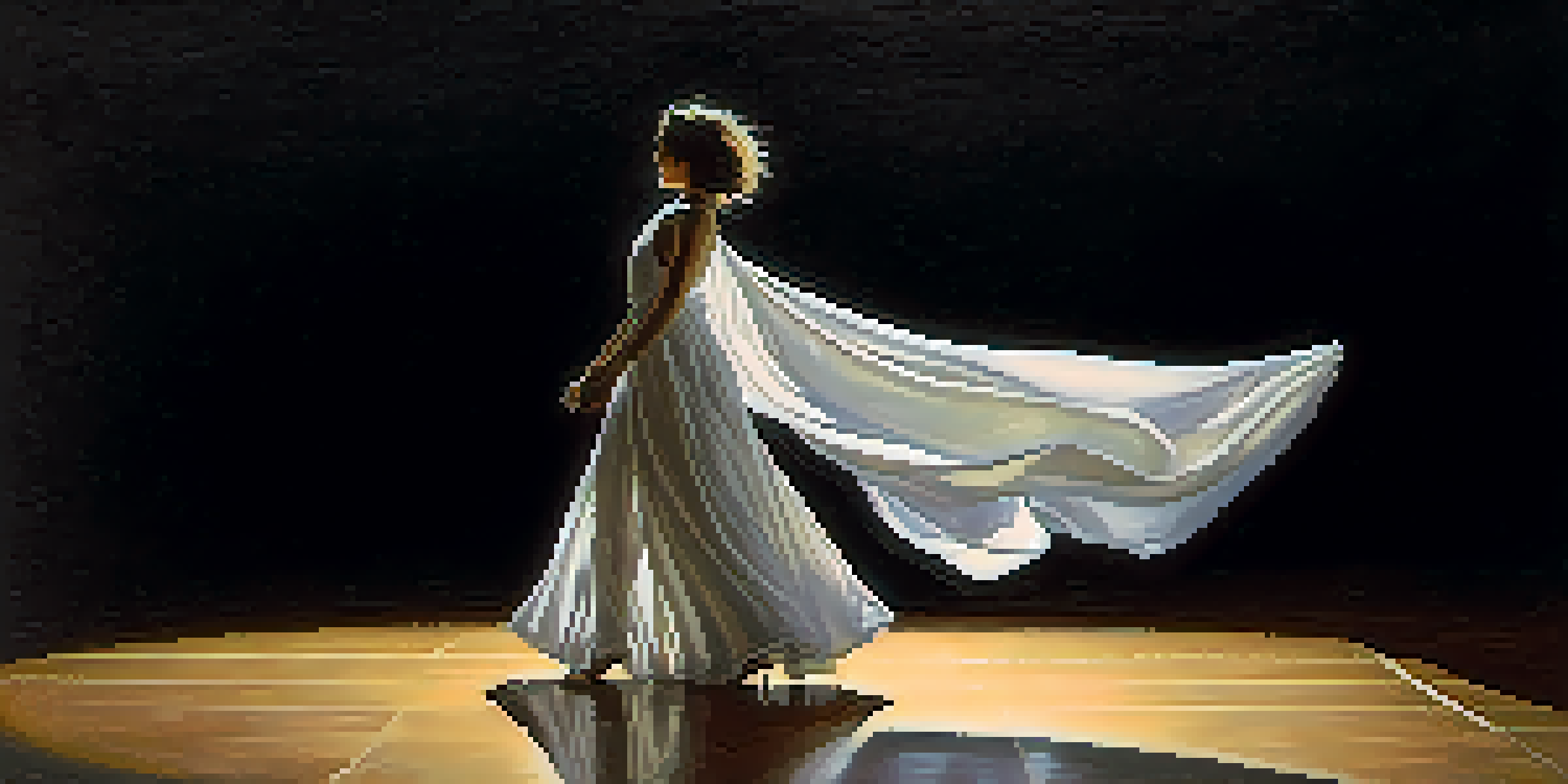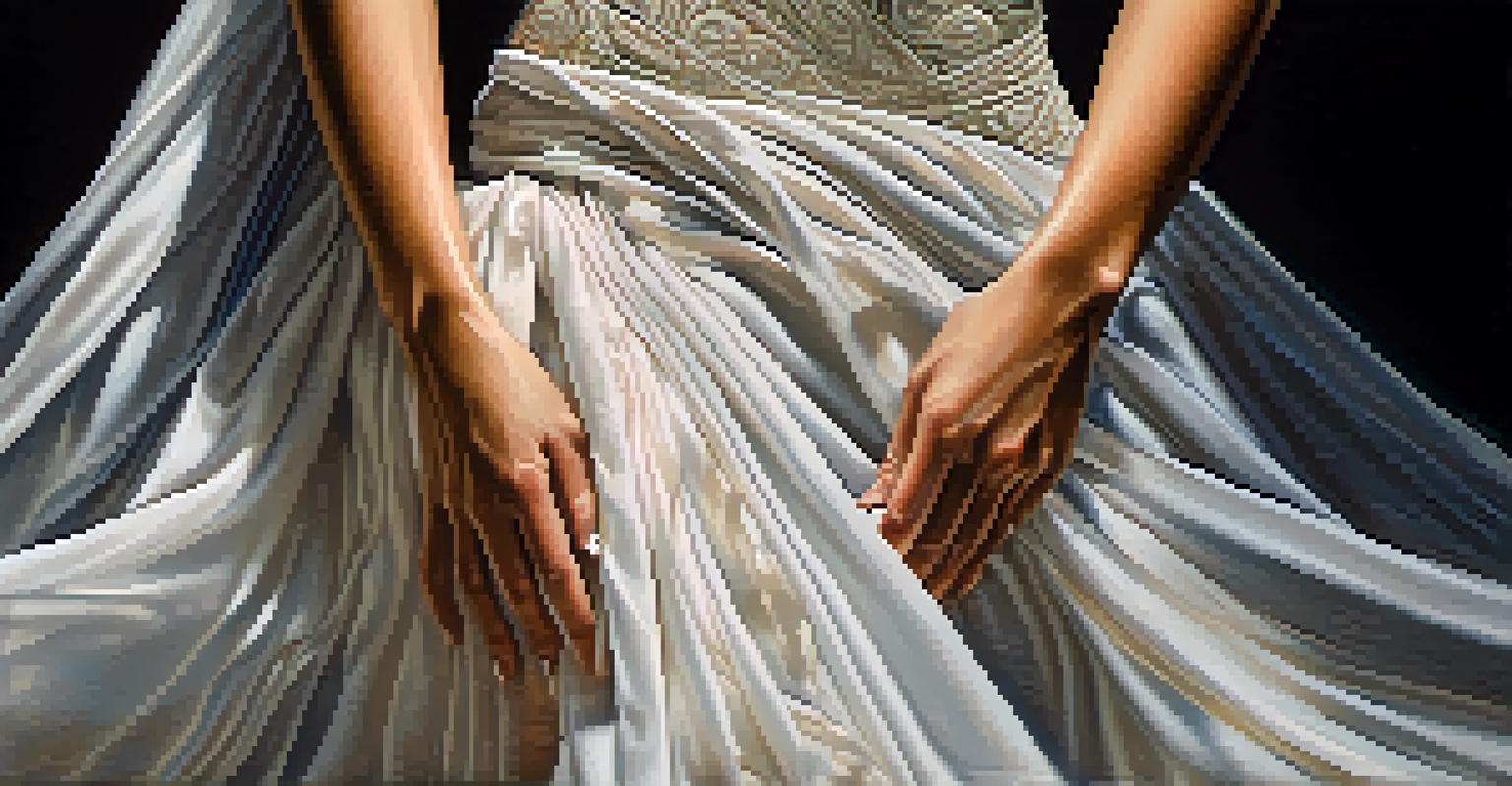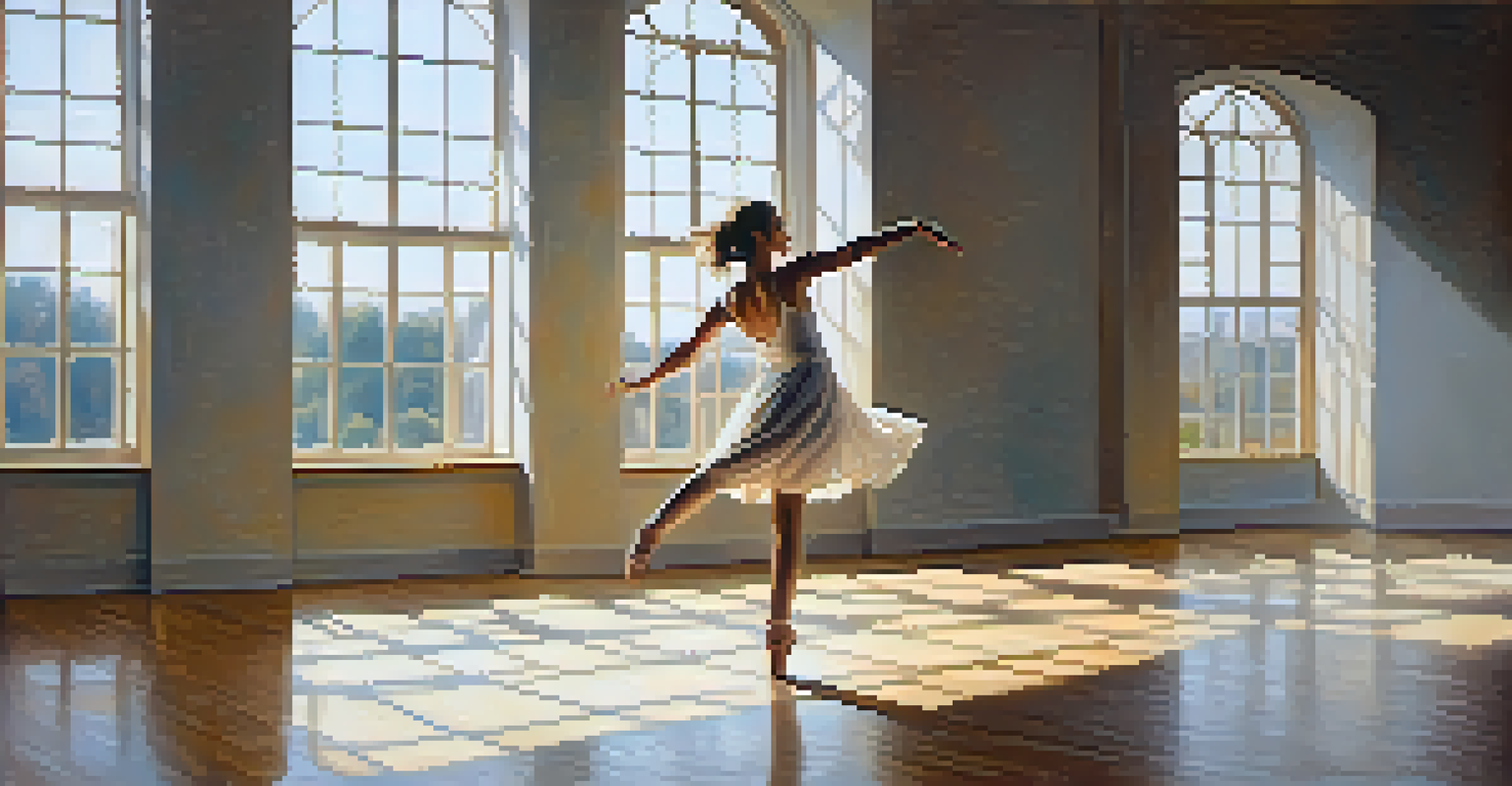Exploring Dance as a Medium for Expressing Loneliness

The Connection Between Dance and Emotion
Dance has always been a powerful medium for expressing emotions, and loneliness is no exception. Through movement, dancers can communicate feelings that words often fail to capture. The fluidity of dance allows for a visceral representation of isolation, transforming personal experiences into universal language.
Dance is the hidden language of the soul.
When we watch a dancer move with a sense of yearning, it resonates with our own experiences of solitude. The body becomes a canvas, painting emotions that might otherwise remain hidden. In this way, dance offers not just an outlet for the dancer, but also a mirror for the audience to reflect on their own feelings of loneliness.
Moreover, the physicality of dance can evoke empathy and connection. Even when expressing isolation, the shared experience of watching can create a bond among viewers. This connection highlights how loneliness, while individual, is a common human experience.
The History of Dance as Emotional Expression
Historically, dance has served as a vehicle for emotional storytelling, often reflecting societal issues and personal struggles. From the early days of tribal dances to contemporary performances, the themes of loneliness and alienation have been woven into the fabric of movement. This evolution showcases how dance adapts to express complex emotions across different eras.

In classical ballet, for example, many performances convey themes of unrequited love and isolation, often through the use of solo performances. These solos create a poignant sense of solitude, allowing dancers to embody their characters' inner turmoil. This historical context enriches our understanding of how dance can articulate feelings of loneliness.
Dance as Emotional Expression
Dance serves as a powerful medium to express and communicate complex emotions like loneliness, resonating with both dancers and audiences.
As society has progressed, so too has the portrayal of loneliness in dance. Contemporary choreographers often blend styles and techniques to explore modern interpretations of isolation, making the medium more accessible and relatable to today’s audiences. This ongoing dialogue between past and present continues to shape the art form.
Choreography: Crafting Loneliness on Stage
Choreographers play a crucial role in expressing loneliness through dance by choosing movements that embody feelings of isolation. They often rely on techniques like slow, deliberate movements or sudden contractions to create a sense of vulnerability. Each choice in choreography can evoke the weight of solitude, making the audience feel the dancer's emotional state.
The dance is a poem of which each movement is a word.
For instance, a dancer might perform with their back turned to the audience, symbolizing emotional distance or disconnection. This simple act can speak volumes, allowing viewers to feel the depth of loneliness without the need for spoken words. Choreography becomes a powerful tool in conveying complex emotions and narratives.
Additionally, the use of space in choreography can amplify feelings of loneliness. A dancer might occupy a large stage alone, emphasizing their isolation in a sea of emptiness. This spatial dynamic not only highlights the dancer's solitude but also invites the audience to reflect on their own experiences with loneliness.
Music: Enhancing the Emotional Landscape of Dance
Music plays an instrumental role in enhancing the emotional landscape of dance, especially when expressing loneliness. The rhythm, melody, and tempo can all influence how the audience perceives the dancer's movements. A slow, haunting melody can evoke feelings of nostalgia and longing, perfectly complementing the theme of isolation.
Consider a piece where the dancer moves to a soft piano score, the notes lingering in the air like unspoken words. This synergy between music and movement deepens the emotional impact, allowing the audience to connect with the dancer's experience on a more profound level. The combination of sound and movement creates an immersive environment that speaks to shared feelings of loneliness.
Choreography and Loneliness
Choreographers use movement and space to craft expressions of isolation, allowing audiences to feel the emotional weight of solitude.
Moreover, the absence of music can also be a powerful choice. Silence can amplify the dancer's movements, making each gesture feel heavier and more poignant. This intentional use of quiet space can create a stark representation of loneliness, highlighting the dancer's struggle and inviting the audience to reflect on their own emotional experiences.
The Role of the Audience in Experiencing Loneliness
The audience plays a vital role in the dance experience, particularly when it comes to themes of loneliness. As spectators, we engage not only with the performance but also with our own emotions and memories. This connection can intensify our understanding of the dancer's portrayal of solitude.
When a dancer expresses loneliness, the audience may find themselves recalling their own moments of isolation. This shared experience creates a sense of community, reminding us that we are not alone in our feelings. The dance becomes a bridge, connecting individual experiences through a collective emotional response.
Furthermore, audience reactions can shape the performance itself. Dancers often draw energy from the crowd, which can amplify the emotional weight of their movements. This dynamic interaction enriches the performance, making the expression of loneliness a shared journey between the dancer and the audience.
Dance Therapy: Movement as a Tool for Healing Loneliness
Dance therapy has emerged as a powerful tool for addressing feelings of loneliness and isolation. By engaging in movement, individuals can express emotions they might find difficult to articulate verbally. This therapeutic approach emphasizes the healing power of dance, helping participants confront their feelings in a safe environment.
In dance therapy sessions, participants often explore themes of loneliness through guided movement. This process allows them to release pent-up emotions while also fostering a sense of connection with others. As they share their experiences through dance, they may find comfort in realizing that they are not alone in their feelings.
Audience's Role in Connection
The audience's emotional engagement enhances the dance experience, creating a shared understanding of loneliness that fosters community.
Moreover, the physicality of dance can encourage participants to reconnect with their bodies and emotions. This somatic approach promotes mindfulness, helping individuals become more aware of their feelings and fostering a sense of empowerment. Ultimately, dance therapy can be a transformative experience, providing a pathway for healing loneliness.
Conclusion: Embracing Loneliness through Dance
In conclusion, dance serves as a profound medium for expressing loneliness, allowing both dancers and audiences to navigate complex emotions. Through movement, choreography, music, and audience interaction, the art form captures the essence of solitude in a way that resonates deeply. This exploration of loneliness through dance not only validates our feelings but also fosters connection.
As we engage with dance, we are reminded of our shared humanity and the universal experience of loneliness. Each performance invites us to reflect on our own emotions, creating a space for empathy and understanding. Ultimately, dance becomes a powerful reminder that while loneliness can be isolating, it can also connect us to others.

So, whether you're a dancer or an audience member, embracing the themes of loneliness in dance can lead to a richer understanding of ourselves and each other. It’s a beautiful reminder that we are all part of the same intricate tapestry of human experience.